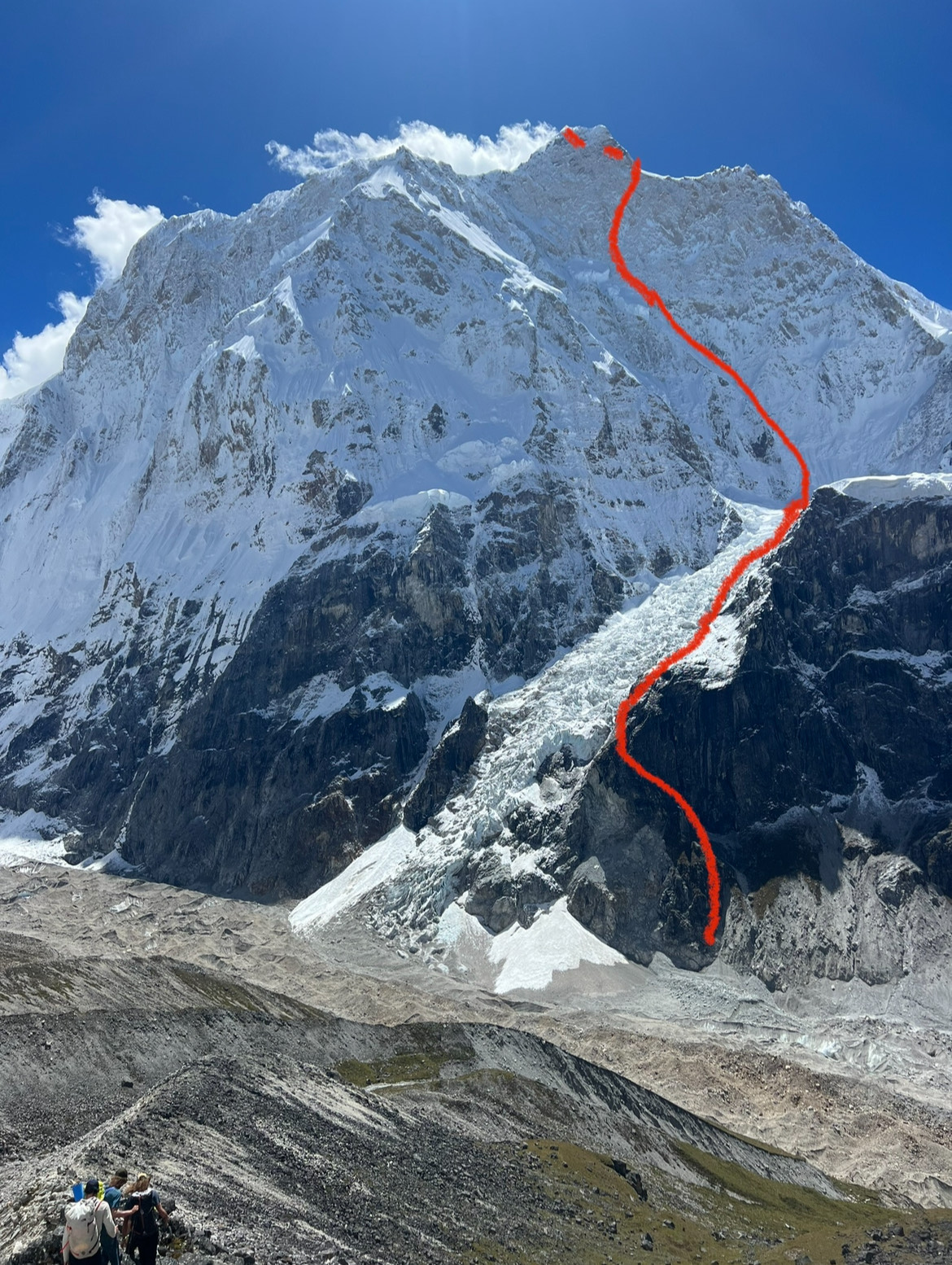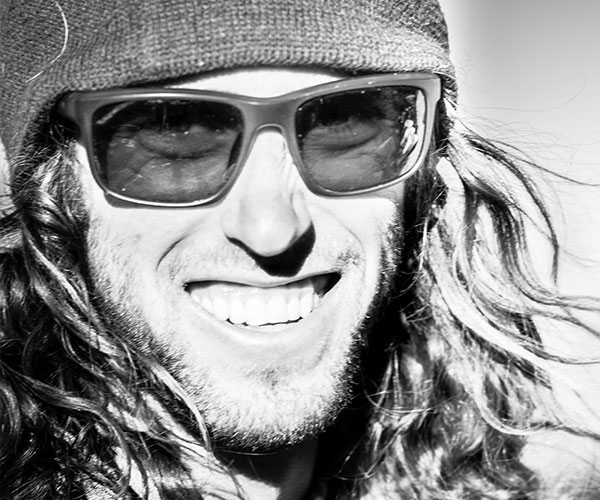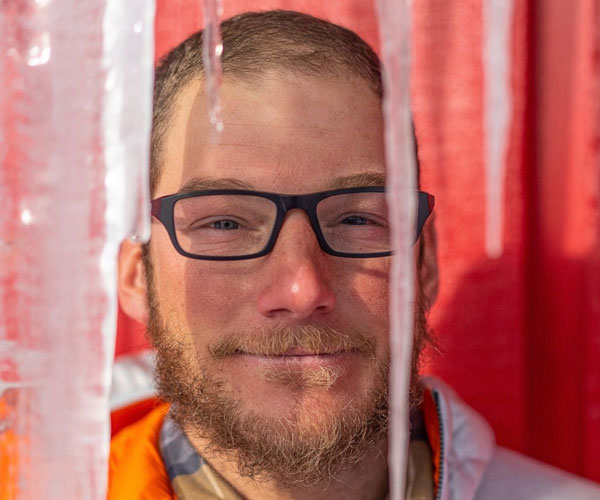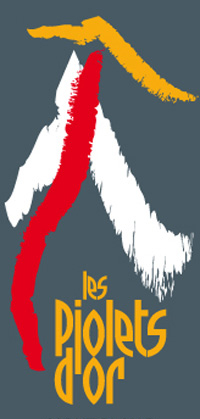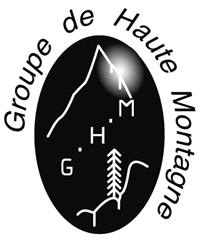©Alan Rousseau
First ascent of Round Trip Ticket (2,700m, M7 AI5+ A0), a partial new route on the north face and northwest ridge of Jannu, Kangchenjunga Himal, from October 7-12. Descended route.
Jean Franco, leader of the first expedition to attempt Jannu (a.k.a. Kumbhakarna), said the true north face was “one of the highest walls on earth. No one will ever go that way”. Inevitably, in 2004, he was proved wrong. In that year a large team of Russian mountaineers, on their second attempt in two years, climbed what the legendary Swiss, Erhard Loretan, who had previously made two attempts himself, described as “currently the greatest challenge in the Himalaya”. Their climb was both outstanding and highly controversial. The sheer headwall, which begins above 7,000m, was likened to the west face of the Dru, and the team surmounted difficulties of 5.10d A3+ M6. However, they received widespread criticism of their style: the climbers had sieged the wall, spending 50 days fixing nearly 3,400m of rope and having taken emergency oxygen.
In 2021, Jackson Marvell and Alan Rousseau set up base camp on the north side of Jannu with the intention of repeating the Russian route in alpine style. However, scoping the headwall, they saw another possible line, slanting right to reach the upper northwest ridge at a little over 7,500m. They decided to try this, not least because they would be on pristine ground and not following large amounts of old rope and hardware. The northwest ridge had been climbed in 2007 by Valery Babanov and Sergey Kofanov in alpine style, the final section to the summit coinciding with the 1983 French Route, which reached this point via the southwest spur. This duo had a good view of the north face, on which Kofanov commented, “Perhaps someday a pair will climb a direct route on the north face in alpine style, but they’ll need to accept the likelihood that they’re buying themselves a one-way ticket.”
Marvell and Rousseau reached 7,200m, gaining considerable knowledge of the route. They returned in 2022 with the addition of Matt Cornell. Marvell had to leave early and the remaining two were only able to reach 6,500m due to consistently high winds and cold temperatures
All three returned in 2023, having refined their climbing system while putting up Aim for the Bushes (1,525m, AI6 X M6) on Mount Dickey, Alaska, one of the most significant new routes climbed outside Asia during the year. On October 7, they left base camp with a new, very lightweight, three-man sleeping system that included two inflatable G7 pods (portaledges). They also carried a forecast of seven days’ fine weather.
Climbing through the initial rock buttress, followed by 300m of icefall, they reached and then climbed the steep 1,100m ramp system, which involved challenging alpine terrain over snow, ice and mixed, to arrive at around 7,100m, just below their 2021 highpoint, on the afternoon of the 9th.
Above 7,200m they slanted right up new ground on the steepest section of the wall to reach a full hanging bivouac at 7,300m. On the morning of the 11th, they passed the crux, a more or less vertical thin ice smear followed by convoluted mixed climbing. They bivouacked one pitch below the northwest ridge at 7,500m. Next day, they finished up the 1983 French Route, reaching the summit in late afternoon. They regained the pods by 11 p.m., and on 13th rappelled the route, mostly from Abalakovs, arriving at base camp around midnight.
Marvell and Rousseau knew that several of their fingers were frostbitten. Discussing options on the following day, they realized that walking out through the jungle for five days, and then driving for three more days to reach Kathmandu, would present a significant risk of infection. They were also told by friends in the USA that a clinic in Kathmandu offered an intravenous treatment, which if administered within 72 hours might reverse some of the injuries. They opted to call for a helicopter. The subsequent treatment eventually limited the damage to the loss of the tip of one little finger for both climbers.
The jury was unanimous: this was an extraordinary ascent that has taken technical alpine style climbing at high altitude to a new level. A combination of great teamwork, visionary strategy, technical ability and experience, together with an evolution in equipment, has led to a new chapter in the history of Himalayan ascents and will be an inspiration for future generations.










